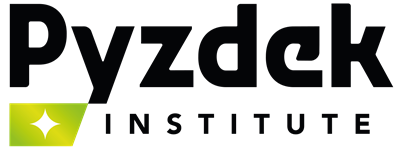At the Pyzdek Institute, we believe in fostering a community of continuous learners. Recently, we held a webinar where our expert panelists Larry and Pete shared insights into the crucial role of a facilitator in team meetings and workshops. Here, we recap the key takeaways and discussions for those who may have missed it, and as a refresher for those who attended.
The primary task of a facilitator is to ensure that group discussions remain on topic, the process is managed effectively, and clarity is maintained throughout the session. The crux of this role is to guide discussions based on data, continuously driving the team back to it to avoid premature solutions.
Larry and Pete emphasized a simple yet powerful formula: Solution = Project x Quality of the solution x Acceptance. Facilitation plays a vital role in fostering acceptance. Without acceptance, the most well-crafted solution may not achieve the desired results.
Q&A Highlights:
The Q&A session covered various interesting topics, and we’ve collated some significant questions and answers below.
Group Size and Additional Facilitators:
Optimally, a group size of 5 to 7 is recommended for problem-solving sessions. However, depending on the context, larger groups may be necessary. In such cases, additional facilitators are brought in to manage the group dynamics effectively.
Facilitating Senior Staff:
Facilitating a group of superiors can seem challenging. The key here is to create an environment where individuals are comfortable with being wrong. This is possible when they have a strong self-image, and an organizational culture that supports open discussions.
Facilitator’s Role as a Black Belt:
A question arose about the role of a Black Belt as a facilitator, especially when the Black Belt’s involvement can impact results. The answer was unequivocal: while Black Belts provide tools and guidance, the results belong to the team. Facilitators should be ready to support the team, even when the project goes in unexpected directions.
Dealing with Different Cultures:
Facilitating groups from different cultural backgrounds requires sensitivity and adaptability. For instance, in India, it may be culturally challenging for individuals to express that they don’t understand something. This is where the facilitator’s role becomes even more essential to ensure that everyone truly comprehends the decisions being made.
Dealing with Senior Leadership Distractions:
An intriguing query came up on how to handle senior leaders who might be distracted by laptops or phones during a meeting. It’s crucial to establish meeting norms about full attention at the beginning of the meeting. Gently closing the laptop lid or gently reminding individuals about meeting rules can help reinforce this.
The webinar was a goldmine of insights about effective facilitation, from managing group dynamics to stimulating enthusiasm. As the saying goes, the strength of the team is each individual member, and the strength of each member is the team. A facilitator who understands this can make all the difference in the successful execution of a project.
Watch the webinar below.

Leave a Reply